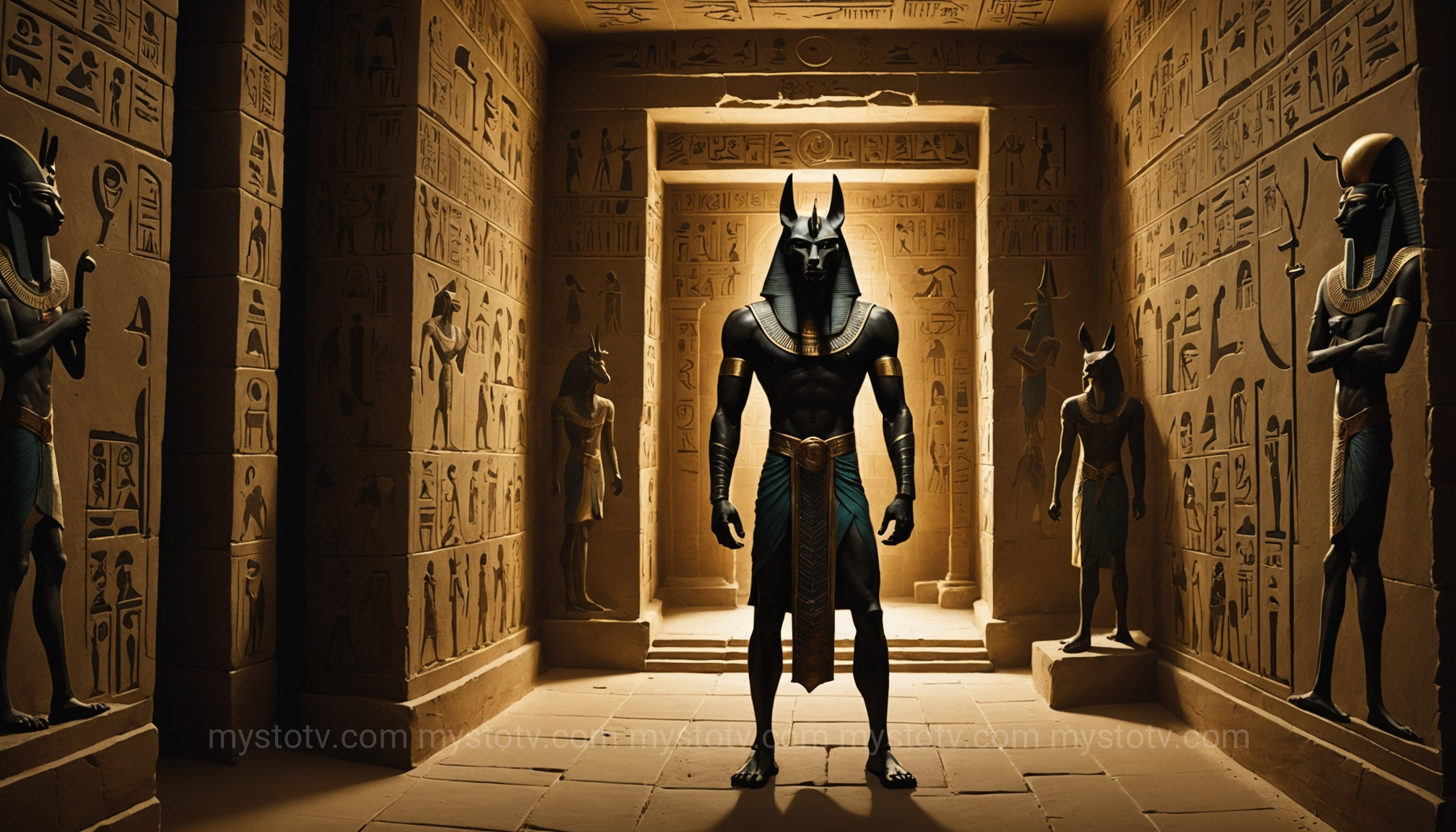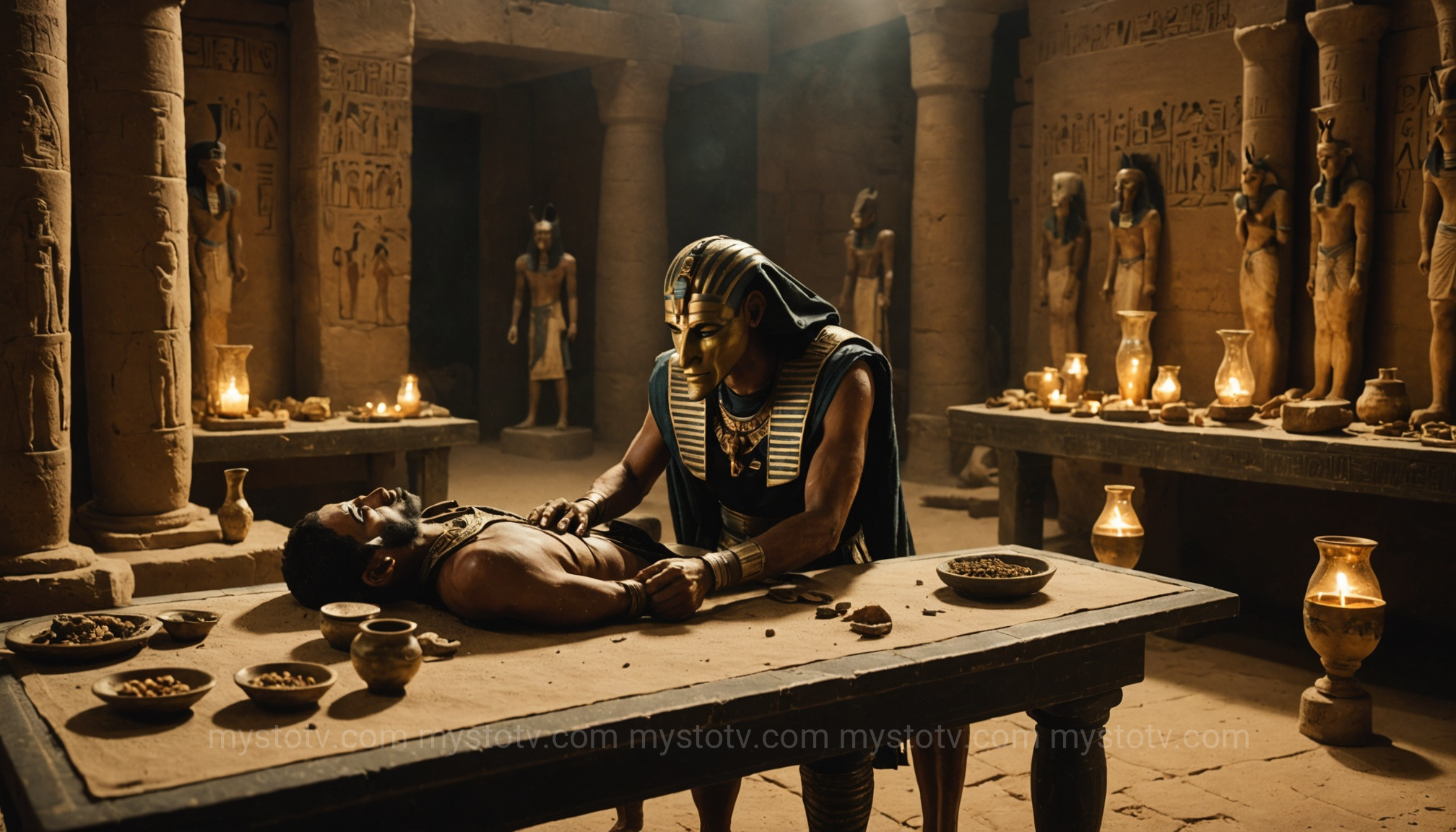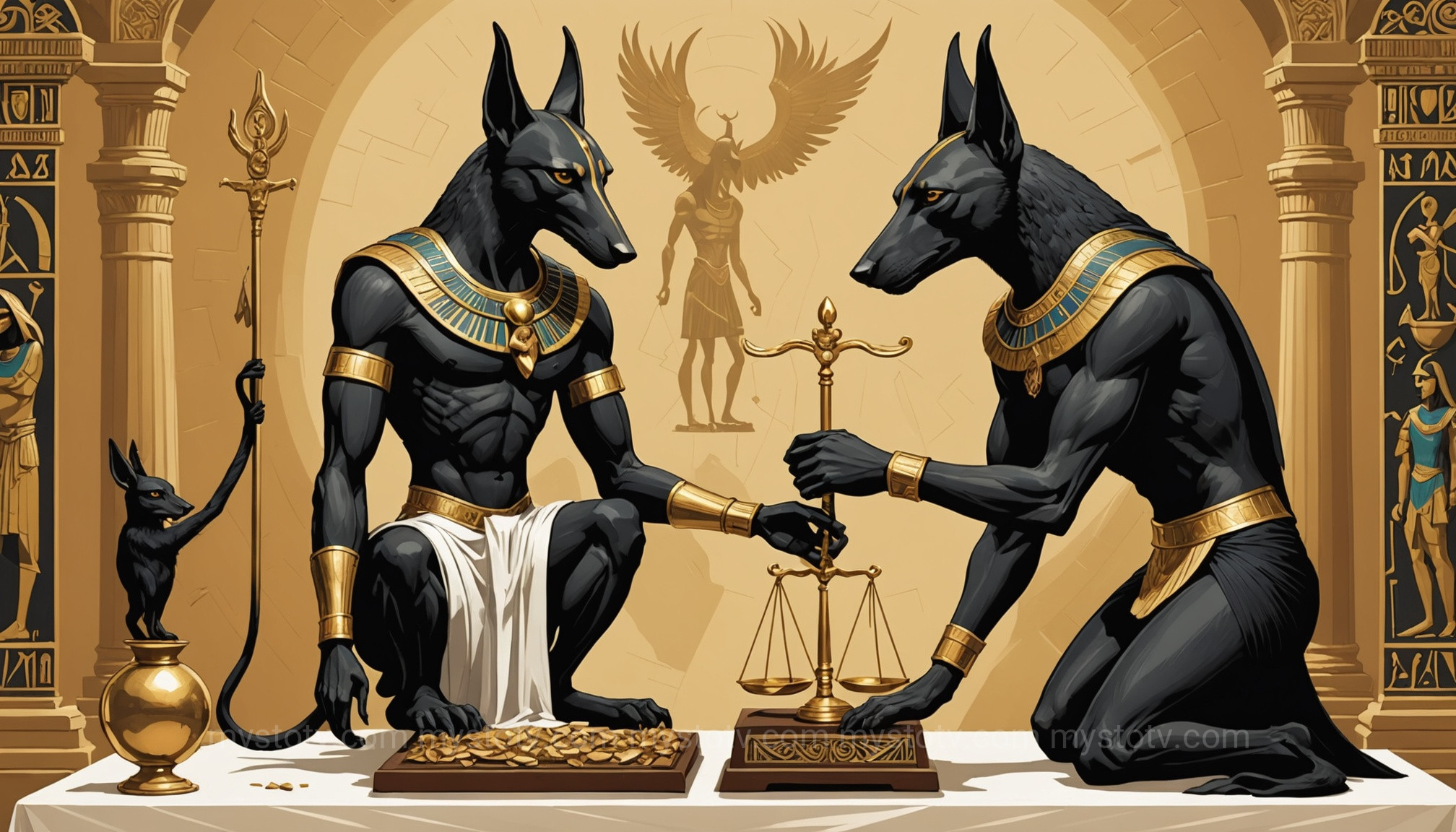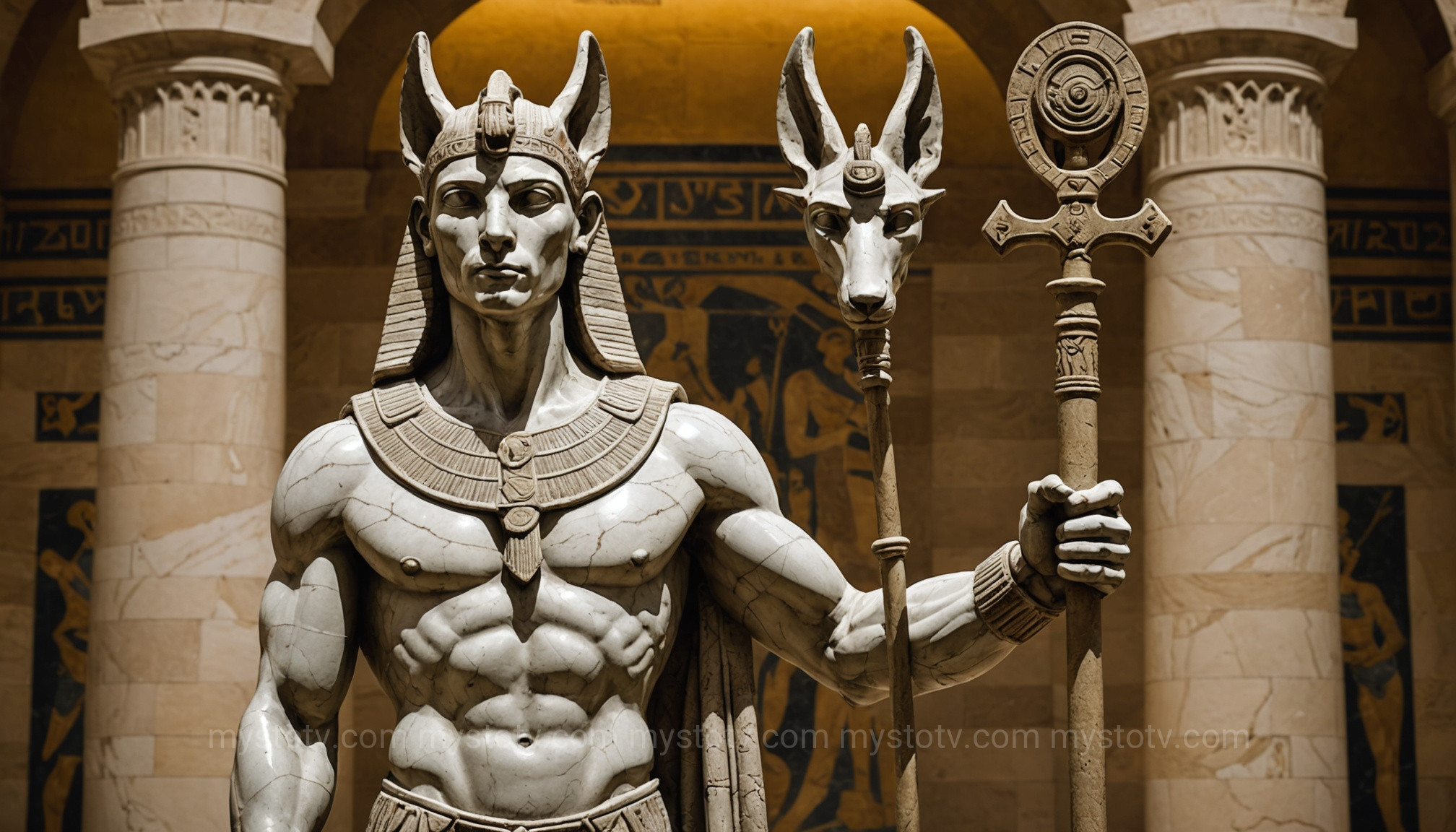I still remember my first visit to a museum's ancient Egyptian wing as a child. Past the towering statues of pharaohs and intricate sarcophagi, one figure stood out, both captivating and unnerving: a man with the head of a jackal, overseeing a scale. That image of Anubis, the gatekeeper to the afterlife, stuck with me. He wasn't just a god; he was a silent, powerful presence embodying the ultimate mystery. Many of us have this surface-level image of him, but the truth is far more complex. Diving into the historical and mythological records reveals a trove of fascinating and often chilling anubis god of death facts that paint a picture far richer than a simple caricature of death. These details show a deity whose role was not to be feared, but respected as a guardian, guide, and a pivotal force in the Egyptian concept of eternity.
Contents
- 1 1. The Original Lord of the Underworld: Surprising Anubis God of Death Facts About His Demotion
- 2 2. Black as Rebirth, Not Death: Revealing Anubis God of Death Facts in Symbolism
- 3 3. Patron of Lost Souls and Embalmers: Practical Anubis God of Death Facts
- 4 4. The Weighing of the Heart: Critical Anubis God of Death Facts on Divine Judgment
- 5 5. Guardian of the Tombs: Protective Anubis God of death facts
- 6 6. The Jackal Connection: Naturalistic Anubis God of Death Facts
- 7 7. A God Without a Major Temple: Anubis God of Death Facts About His Worship
- 8 8. Anubis's Mysterious Family: Lesser-Known Anubis God of Death Facts
- 9 9. The Greco-Roman Fusion: Anubis God of Death Facts and Hermanubis
- 10 10. Anubis in the Book of the Dead: Written Anubis God of Death Facts
- 11 Frequently Asked Questions about Anubis
- 12 Conclusion: The Enduring Guardian of Eternity
- 13 References
1. The Original Lord of the Underworld: Surprising Anubis God of Death Facts About His Demotion

One of the most surprising facts about Anubis is that he wasn't always second-in-command. In the earliest periods of Egyptian history, during the Old Kingdom (c. 2686–2181 BCE), Anubis was the principal god of the dead. He held the supreme title, "Foremost of the Westerners" (Khenty-Amentiu), signifying his rule over the land of the dead, which the Egyptians believed lay to the west where the sun set. He reigned supreme over the underworld, guiding and judging every soul.
The Rise of the Osiris Myth
So, what changed? The ascendancy of the Osiris myth. As the story of Osiris—the god who was murdered by his brother Set, resurrected by his wife Isis, and became the first mummy—gained immense popularity during the Middle Kingdom (c.2055-1650 BCE), his role began to overshadow Anubis's. Osiris's story offered a powerful narrative of resurrection and eternal life that resonated deeply with the populace. Consequently, Osiris took over the title of "Foremost of the Westerners" and became the ultimate ruler of the Duat (the Egyptian underworld). This is a crucial piece of the puzzle when examining anubis god of death facts.
Analysis: A Graceful Transition
Rather than being violently overthrown or erased, Anubis was gracefully assimilated into the new Osirian framework. His role shifted from the supreme ruler to the indispensable assistant. He became the god who prepared Osiris's body, thus inventing mummification, and who guided the deceased into Osiris's presence for the final judgment. This shift demonstrates the fluid nature of ancient Egyptian religion, where deities' roles could evolve to fit new, more popular theological narratives. Anubis's "demotion" wasn't a sign of weakness but an adaptation that secured his place in the pantheon for millennia.
2. Black as Rebirth, Not Death: Revealing Anubis God of Death Facts in Symbolism
When you see the jet-black head of Anubis, the immediate modern assumption is that the color represents death, darkness, or mourning. However, for the ancient Egyptians, the color black (kemet) held a profoundly different and more positive meaning. This is one of the most misunderstood anubis god of death facts. The color was directly linked to the fertile, black silt deposited by the Nile River's annual flood, which brought life and abundance to the arid land. Therefore, black was the color of fertility, regeneration, and rebirth.
Analysis: The Color of Life in the Afterlife
By depicting Anubis as black, the Egyptians weren't portraying a grim reaper. They were emphasizing his role as a facilitator of rebirth. His color symbolized the promise that death was not an end but a transition to a new state of being, much like the fertile black soil gave rise to new crops. This symbolism connected him directly to the concept of resurrection. He wasn't the god of death in the sense of an ending, but the god who presided over the transformation that death initiated, ensuring the deceased could be reborn in the afterlife.
3. Patron of Lost Souls and Embalmers: Practical Anubis God of Death Facts

While his role in the afterlife is famous, Anubis had a critical job among the living. He was the patron god of embalmers and mummification. Priests who performed the sacred rituals of preparing the body for burial would often wear a jackal mask of Anubis. By donning the mask, the priest was believed to embody the god himself, ensuring the rituals were performed with divine authority and precision. He was also known as the "Lord of the Sacred Land," referring to the necropolis and the workshops where this holy work took place.
The "Opener of the Ways"
Another of his crucial titles was Wepwawet, often translated as "Opener of the Ways." While sometimes considered a separate deity, this aspect was heavily associated with Anubis. In this role, he didn't just open the path to the afterlife; he opened the way for the funeral procession and protected the deceased on their journey. This is a vital part of understanding the comprehensive anubis god of death facts; he was a guide from the moment of death, not just at the final judgment.
Analysis: Bridging the World of the Living and the Dead
This patronage reveals Anubis's function as a crucial intermediary. He wasn't a distant, terrifying figure but an active participant in the most important rites of passage for ancient Egyptians. His presence in the embalming tent provided comfort and assurance to the living, guaranteeing that their loved ones were being cared for by a divine hand. This role solidifies his character as a protector and caretaker, a god who managed the delicate and sacred transition between the two worlds.
4. The Weighing of the Heart: Critical Anubis God of Death Facts on Divine Judgment

Perhaps the most iconic and chilling role of Anubis was his part in the "Weighing of the Heart" ceremony, a central event in the soul's journey through the Duat. This wasn't a metaphor; the Egyptians believed this was a literal event. Anubis would lead the soul of the deceased into the Hall of Two Truths, where their heart (believed to be the seat of intelligence and conscience) was weighed against the feather of Ma'at, the goddess of truth and justice.
The Scales of Justice and the Devourer
Anubis was responsible for ensuring the scales were accurate. He would adjust the balance and read the result. If the heart was lighter than or equal in weight to the feather, it meant the deceased had lived a virtuous life. They would then be declared "true of voice" and presented by Horus to Osiris to enter the paradise of the Field of Reeds. However, if the heart was heavy with sin, it would outweigh the feather. The scale would tip, and the heart would be fed to Ammit, "the Devourer of the Dead"—a terrifying composite beast that was part crocodile, part lion, and part hippopotamus. This second death meant eternal oblivion, the ultimate horror for an ancient Egyptian.
Analysis: The Incorruptible Judge
In this ceremony, Anubis is not an executioner but an impartial arbiter. His role is technical and precise. He ensures the judgment is fair. The "chilling" nature of this fact lies in its absolute finality and the razor's edge upon which eternity rested. Anubis's calm, focused demeanor in ancient depictions underscores the gravity and impartiality of the process. He is the embodiment of a law that cannot be bribed or deceived, making the encounter with him the most pivotal moment of a soul's existence.
5. Guardian of the Tombs: Protective Anubis God of death facts
Beyond guiding souls, Anubis had a formidable earthly duty: protecting the tombs and graves of the dead. As a god associated with the necropolis, he was invoked to guard burial sites against thieves and desecration. This is one of the most practical anubis god of death facts. Curses and spells inscribed on tomb walls often called upon Anubis to exact revenge on anyone who disturbed the deceased's eternal rest. His fearsome jackal form was a powerful deterrent.
The Anubis Shrine of Tutankhamun
A stunning example of this role was discovered in the tomb of Tutankhamun. A life-sized wooden statue of Anubis in his full jackal form, painted black and placed on a gilded shrine, was found guarding the entrance to the Treasury room. This shrine was not merely decorative; it was a potent magical guardian, strategically placed to repel intruders in the spiritual and physical realms. Its discovery in 1922 brought Anubis's role as a protector into the modern consciousness.
Analysis: A Divine Security System
The belief in Anubis as a guardian highlights the deep Egyptian anxiety about the sanctity of the tomb. The tomb was the deceased's eternal home and the vessel for their journey in the afterlife. Any disturbance could jeopardize their eternity. Anubis provided a divine security system, a promise that a powerful god was personally watching over them. This made him a figure of comfort for the righteous and terror for the wicked.
6. The Jackal Connection: Naturalistic Anubis God of Death Facts
Why a jackal? The choice of this animal was not random. Ancient Egyptians were keen observers of their natural environment. Wild canids, likely the African golden wolf which was then identified as a type of jackal, were commonly seen prowling the edges of the desert, particularly around cemeteries and burial grounds. They were scavengers, often observed digging in shallow graves.
Analysis: Turning a Threat into a Protector
Instead of viewing these animals as mere pests, the Egyptians co-opted their image in a brilliant theological move. They transformed this creature of the necropolis, which could desecrate a grave, into its divine protector. By making the jackal the symbol of Anubis, they essentially turned the greatest natural threat to the dead into their greatest supernatural guardian. This is a powerful example of how ancient religions often incorporated and reinterpreted natural phenomena to address real-world fears.
7. A God Without a Major Temple: Anubis God of Death Facts About His Worship
Unlike major state gods like Amun-Ra, Horus, or Isis, Anubis had no grand temples dedicated solely to him in the great religious centers like Thebes or Memphis. His worship was more localized and functional. His primary cult center was in Upper Egypt at a place the Greeks called Cynopolis, meaning "City of the Dog." Here, he was worshipped, and sacred canids were likely kept and mummified in his honor.
Analysis: A Universal, Yet Localized Presence
The lack of massive state-funded temples does not mean Anubis was unimportant. On the contrary, his presence was arguably more universal. Every single funeral, mummification, and burial involved him. He was present in every necropolis and invoked in countless private funerary texts and tomb paintings across Egypt. His worship was deeply personal and tied to the universal experience of death, rather than the political power of the state. This makes his influence more pervasive, if less monumental, than that of other gods. These subtle anubis god of death facts show his importance was felt by everyone.
8. Anubis's Mysterious Family: Lesser-Known Anubis God of Death Facts
The parentage and family of Anubis are among the most inconsistent parts of his mythology, changing over time and by region. In early myths, he is often cited as the son of the sun god Ra. However, in the later, more dominant Osiris myth, a more scandalous story emerged. He was said to be the illegitimate son of Osiris and his sister-in-law, Nephthys. In this version, Nephthys, desiring a child, disguised herself as her sister Isis to seduce Osiris. Fearing the wrath of her husband, Set, she abandoned the infant Anubis, who was then found and raised by Isis as her own.
His Daughter, the Purifier
Anubis was also sometimes depicted as having a daughter named Kebechet (or Qebhet). She was a goddess of coolness and freshness, associated with the libation water used in purification rituals during mummification. Her role was to provide cool water to the souls of the dead and to help purify her father, Anubis. This familial connection further deepens his role in the sacred funerary rites.
Analysis: Mythology as a Social Fabric
The shifting stories of his parentage reflect the changing theological landscape. Tying him to the Osirian family solidified his place within that powerful mythos. The story of his adoption by Isis portrays her as compassionate and cements a positive relationship between the two deities, despite the tricky circumstances of his birth. It shows how myths were woven and re-woven to create a cohesive, if sometimes contradictory, divine social fabric.
9. The Greco-Roman Fusion: Anubis God of Death Facts and Hermanubis
Anubis's influence did not end with the fall of the pharaohs. During the Ptolemaic Period (332–30 BCE) when Greece ruled Egypt, and later under Roman rule, Egyptian and Greco-Roman deities were often syncretized, or merged. Anubis was combined with the Greek messenger god, Hermes, who was also a psychopomp (a guide of souls to the afterlife). The result was a new deity: Hermanubis.

Analysis: A Cross-Cultural Guide of Souls
Hermanubis combined the attributes of both gods. He was depicted with a human body like Hermes but with the jackal head of Anubis. He carried Hermes's sacred staff, the caduceus, and was seen as a guide to both heavenly and earthly wisdom. The cult of Hermanubis was popular in Roman times, demonstrating the enduring power and adaptability of Anubis's core role as a trusted guide for the dead, a concept that transcended cultural boundaries.
10. Anubis in the Book of the Dead: Written Anubis God of Death Facts
Anubis is a constant and vital presence in the collection of funerary spells and texts known as the "Book of the Dead" (the true Egyptian name was The Book of Coming Forth by Day). These scrolls were a crucial guide for the deceased, intended to help them navigate the treacherous challenges of the underworld. Anubis appears in numerous vignettes and spells.
His Many Roles in Text
Within the papyri, he is shown leading the deceased by the hand into the Hall of Judgment. He is mentioned in spells for protecting the mummy and the tomb. He is, of course, the central figure in illustrations of the Weighing of the Heart. The texts reinforce all of his primary roles: embalmer, protector, guide, and arbiter. Without the guidance provided by Anubis in the Book of the Dead, a soul would be lost.
Analysis: The Written Guarantee
The Book of the Dead acted as a "cheat sheet" for the afterlife, and Anubis was the proctor of the most important exam. His repeated appearance in these sacred texts underscores his non-negotiable importance. To the Egyptians, these weren't just stories; they were practical instructions. The fact that Anubis featured so heavily in their written guide to eternity shows the immense trust and faith they placed in him. These are not just mythological anubis god of death facts; they are reflections of deeply held beliefs codified in sacred scripture.
Frequently Asked Questions about Anubis
1. Was Anubis considered evil by the ancient Egyptians?
Absolutely not. This is a common modern misconception influenced by associating jackals and death with negative forces. To the ancient Egyptians, Anubis was a benevolent and protective deity. He was a guardian who ensured a fair judgment, protected the dead from harm, and guided them safely to the afterlife. He was a figure of immense respect, not fear.
2. Why is Anubis a jackal and not some other animal?
The connection stems from the observation of jackals (or African golden wolves) frequenting cemeteries on the desert's edge. Rather than seeing them as a threat, the Egyptians deified the animal, turning the potential desecrator of graves into their divine protector. It was a theological solution to a real-world problem, imbuing the creature with a sacred duty to guard the very places it was known to roam.
3. Who was more powerful, Anubis or Osiris?
Initially, during the Old Kingdom, Anubis was more powerful as the sole ruler of the underworld. However, with the rise of the Osiris myth during the Middle Kingdom, Osiris became the supreme lord of the afterlife. While Osiris held the ultimate authority as king and final judge, Anubis retained an indispensable and powerful role. One could not reach Osiris without passing through Anubis's hands first, making them both critically important, but with Osiris holding the higher rank in the later pantheon.
Conclusion: The Enduring Guardian of Eternity
Exploring the many layers of anubis god of death facts reveals a deity far more nuanced than a simple harbinger of doom. Anubis was a cornerstone of the ancient Egyptian understanding of life, death, and rebirth. He was the calm in the face of oblivion, the impartial judge, the sacred embalmer, and the steadfast guardian. From his original position as lord of the underworld to his enduring role as the guide of souls, Anubis represents not an end, but a safe passage. The chilling aspect of his mythology comes not from malice, but from the sheer weight of his responsibility—overseeing the delicate, irreversible journey into eternity, a task he performed with divine, unwavering focus.
References
- British Museum. (n.d.). Anubis. The British Museum.
- DuQuesne, T. (2005). The Jackal Divinities of Egypt I: From the Archaic Period to Dynasty X. Darengo.
- Ikram, Salima. (2003). Death and Burial in Ancient Egypt. The American University in Cairo Press.
- Pinch, Geraldine. (2002). Handbook of Egyptian Mythology. ABC-CLIO.
- World History Encyclopedia. (2016, April 19). Anubis. https://www.worldhistory.org/Anubis/